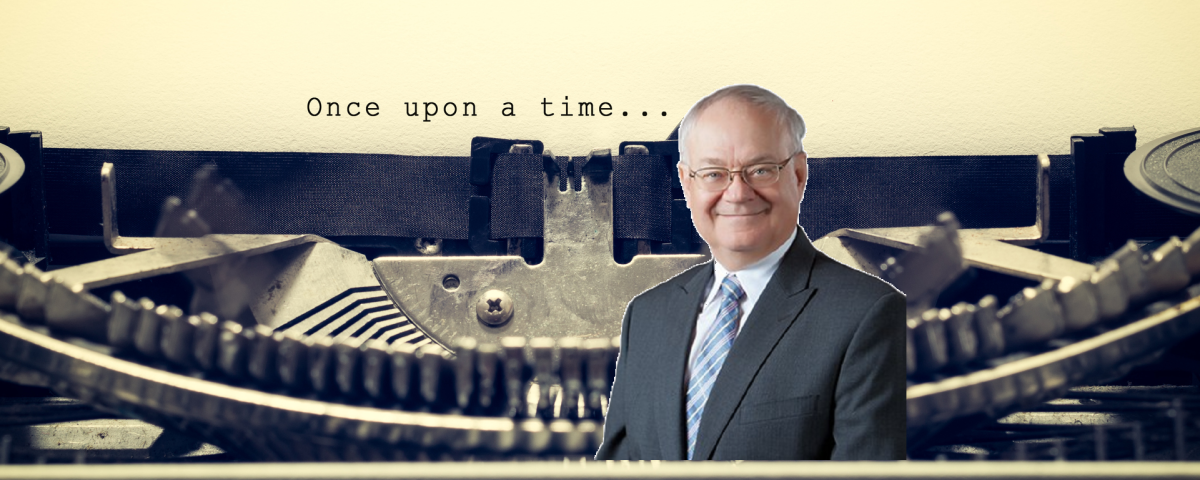Old Roanie stopped his plodding gait and hung his bridled head over the cliff edge. His young rider pushed his straw “Stetson” back and rested his elbow on the saddle horn. He surveyed the depths of the barren moonscape hundreds of feet below. Sheer ridges of yellowish-white rock/dirt sliced the depths into pie shapes with vertically walled canyons and valleys between the ridges that reminded the rider of knives hanging in a butcher shop.
“’The Slide,’ Dad had said. ‘Just find the Slide’ he said. Sure, how am I supposed to find a Slide in this jumble of knife blades?” the young cowboy lamented.
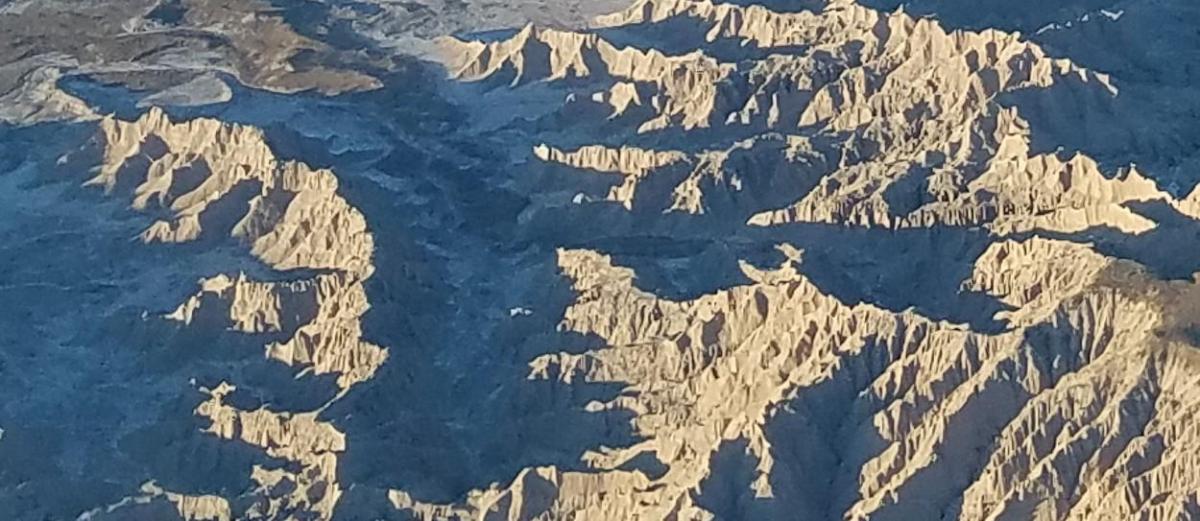
This cowboy could not see the Cheyenne River. Surely it was there somewhere in the distance, but how far away? How could he tell if he was going the right way? Dad had said, “Just ride down the Slide and follow the trail. You will run right into camp. But watch out. The Slide has washed away some so be careful.” The rider had asked, “What was the Slide?” His dad replied that a bulldozer had shaved off the top of one of the knife blade ridges and made it wide enough that cattle and a horse could walk up or down the path. But that had been years ago and had not been used much lately. So, a rider had to be careful.
Dad said, “You can find it. Just cross White River at Stones Crossing, follow the road past Georgianna Temple’s house, ride past Chimney Butte. Then ride up the Cuny Table road past the spring and follow the gravel road past the branding corrals and the old house foundation and on through the winter pasture. Go past the Cuny Table School house and past Sidney Cuny’s road that turns toward his place off the south side of the Table and once you get through the next gate. (Don’t try to jump the cattle guard, just use the gate next to it, you can open the gate easy enough.) Then turn north and follow the trail past the Stronghold’s narrow neck and you will get to the trail that drops off the Table on the North on the Slide. If you move right along you should get there before dark.”
This was going to be an all-day ride.
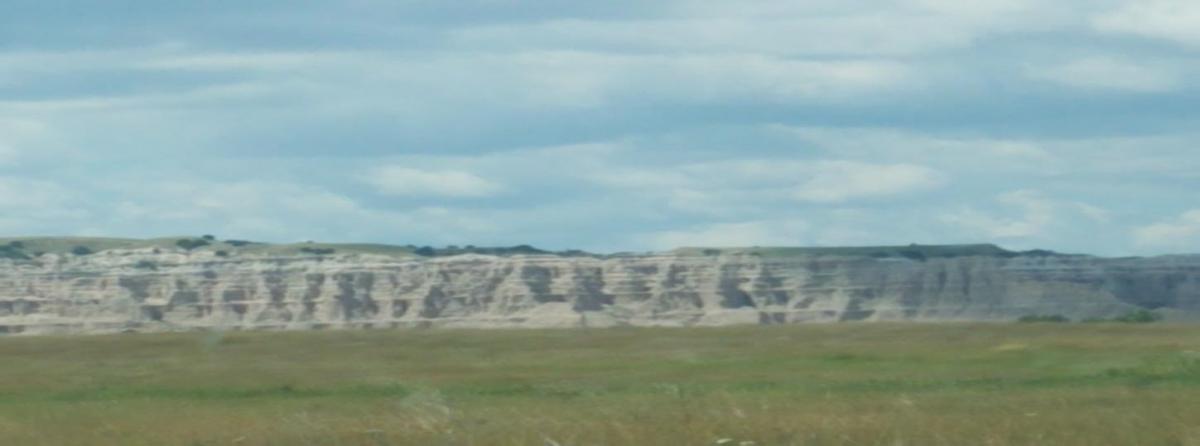
Mom had fed me a good breakfast, pancakes, eggs fried hard, and a slice of ham. She filled a glass quart jar with water and wrapped it in the roll of clothes. A couple pairs of pants, two or three shirts, clean underwear, and socks. All that was wrapped in a jacket. Not particularly rain-proof but helpful on a chilly night in June, to be tied behind the saddle.
There was no phone at the camp. But that didn’t matter. There was no phone at home either. No one said how long I would be gone. No one would know if I lived or died until I came home.
Dad said, “Help Pete with the branding. He might not have anyone to help him. He has a couple hundred head to take care of.” I didn’t give it much thought. I was looking forward to being a “cowboy” this summer. Not a farm hand or baler driver. This would be a nice change from the ordinary!
On the other hand, I remembered my dad driving to the Stronghold when I was a kid. How many years ago was that? I couldn’t remember. I had no recollection of ever seeing this maybe mythical Slide. I had been with dad to the Cheyenne River Camp once. I may have been 5? Maybe 6? That was about 10 years ago.
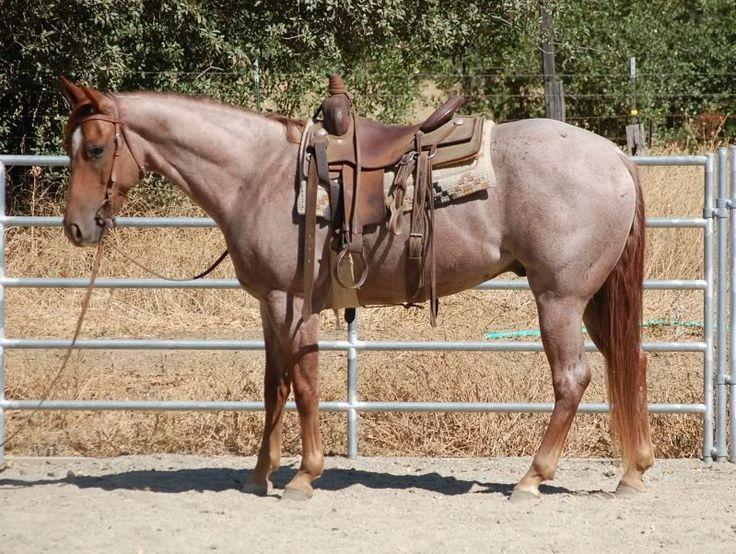
Old Roanie was a fairly tame horse. He didn’t spook easy and was easy enough to catch and saddle in a corral. He had been around a while. Maybe longer than me. I don’t know where he came from. I don’t know if he was one the family had raised, or if he was bought at some sale barn. Now, looking back, I suspect Roanie had been around for a long time but the cowboys found other horses faster and more nervous and more willing to lope over the hill to search for that last, lost, calf. Old Roanie liked the barn and the grain sack and the easy work of watching me drive a tractor baling his winter feed.
We set off, with barely a good-bye to mom. No one else seemed to care. She seemed to duck her head and then disappear into the house just before I mounted up.
Old Roanie and I plodded along. Occasionally I would tire of the plod and would kick him in the ribs until he would trot. His lope lasted for about a minute. Not much for covering the million miles we had to go today.
I was familiar with the road to Cuny Table. I had baled hay in all the fields that lay between the house and White River. I remembered the spring-fed water trough half way up the side of Cuny Table along the dirt road. I remembered the time Red Levi got his fuel truck stuck near that spring and stayed overnight with us until the ground froze the next morning. But that was when I was only two or three and we lived in the house on Cuny Table.
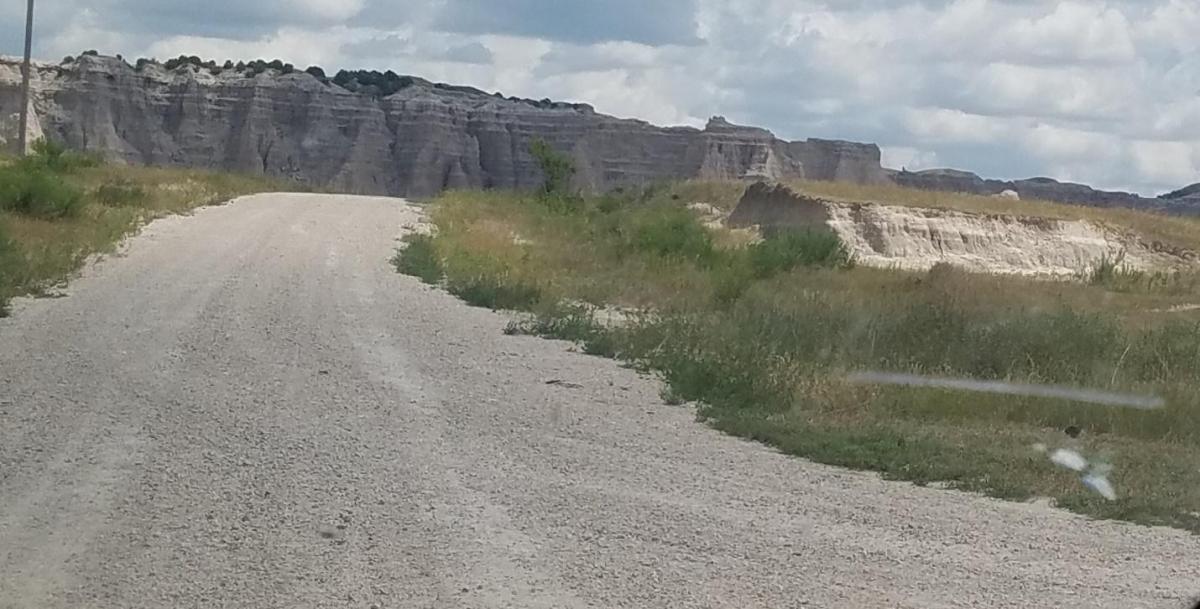
I followed the road past the school and past the turn for Sidney Cuny’s house. His house sits just under the cliff which is the south side of Cuny Table. (I often wondered why they called it “Cuny Table.” Coincidental, I guessed.)
I turned north and after a while rode past the narrow slip of land that opened out for the Stronghold. I remembered the stories of the Stronghold. (The were a variety of stories. This one was the most romantic and prettier.) A small band of Indians had left the camp at Fort Robinson against military orders and had made a run down the White River valley for Wounded Knee Creek and then up the Cheyenne River toward the Black Hills pursued by cavalry on horseback in the middle of the winter, hoping to escape the confinement and poor provisions for the women and children and the former or maybe not so former warriors who had to admit defeat in the face of hordes of white settlers who violated the treaties their own government made with the natives who had freely roamed for centuries and who now were crowded into a tiny fraction of what was once a million square miles of rolling prairie populated by pheasant, grouse, ducks, geese, antelope, deer, buffalo and fish supplied for Man by the Great Spirit. The little band of Indians had avoided capture by hiding in little valleys and in what few trees survived the harsh and dry climate in the 100 miles from Fort Robinson to Cuny Table. But the cavalry caught up with them and the Indians made their stand on a tiny island of flat mesa tied to the Cuny Table mesa by a narrow neck and surrounded by sheer walls three hundred feet to the bottom. Dad had pointed out the remains of the ditches and low walls of dirt the Indians dug on one end of the neck and the same ditches and walls the soldiers made on the other side. The Indians held the soldiers back for several days and nights. But after a while the food supplies ran out and water could be had only by the little snow that could be gathered and melted over tiny fires of buffalo grass and the grass that buffalo and antelope digested into buffalo chips. The cavalry expected the Indians to soon run out of supplies and expected them to surrender without a shot having to be fired. And so they waited. But one morning the cavalry awakened to find that their captives had vanished in the night, probably by quietly sliding down the side of the mesa and disappearing into the gullies and hills toward Cheyenne River.
This young cowboy decided that if a bunch of women and children and a few men could get off the mesa in the blackness of a moonless night, he could, too, in broad daylight.
He thought about his next step. There was no nice, smooth Slide. It seemed there were three choices. A: Go straight ahead. Not a pretty choice. B: Turn left, or C: Turn right.
This young cowboy had no sense of which way was the correct way to find the Slide. The young cowboy had seen some local cowboys ride horses in some horribly rugged country and he had been impressed. So impressed, as matter of fact, he had no desire to duplicate the attempts. Dad said that horses born and raised in the Badlands could do things normal horses wouldn’t do or know how to do.
He nudged my horse ahead until Roanie’s nose hung over the edge of the cliff. He kicked Roanie in the ribs and said, “Git goin! We ain’t got all day!
Old Roanie had resigned himself to the fact that tonight he would not be sleeping in the corral by the tin barn and that going ahead was probably easier than going back now, even if he was not sure where “ahead” was going to be. The young cowboy in the saddle did not seem any too sure where “ahead” was either. But straight ahead was not the right way.
So Old Roanie took a decisive step to the right and when no one seemed to object he kept on walking. And walking. And keeping one eye on the edge of the cliff.
After a while Roanie turned toward the cliff edge and a grassy slope appeared! Roanie seemed to know! But how did Roanie know? Had he been this way before? Where did Roanie come from anyway? How long had Dad owned him? Where did he come from? Had he ever been down this trail before?
Roanie had found the Slide. Or its remnants. It looked more like a grassy sidehill, with cedar trees holding rocks in place and a thin layer of sandy, softer dirt for a little traction for a horse’s hoof. This young cowboy merely silently rode the rolling saddle as Roanie’s stiff-kneed clamber partly slid and partly tripped down the steep path, which made the horse’s weight sway from side to side as the lead hoof alternated from one side to the other. At the bottom of the long slide a semblance of a trail could be detected when it cut across the bottom of a little ridge jutting into the crooked streambed of the dry creek. There was little choice but to follow the streambed since it would be a difficult clamber to scale the steep walls on either side of the streambed. It was also difficult to see very far ahead because of the curves and twists. Or to see behind. It was impossible to see how much farther the trail led and equally impossible to see how much of the trail had been traveled so far. In a way, the journey was much like that of Columbus’s as he crossed the Atlantic Ocean toward the West from Spain with nothing more than a guess as to the distance to India and no way to tell how far he had come.
After a long time Roanie came to a car track. It paralleled a flooding river. Its size guaranteed that it was the Cheyenne River. I chose to ride down stream, thinking something looked familiar going that way, perhaps a memory of a trip in a Jeep from a different way and a long time ago. Sure enough, again after an interminable ride, a cabin came into view. But whose cabin was it? How many cabins were on this trail? Any? Had I selected the wrong direction? Was I still on the Reservation? Maybe in North Dakota?
The cabin had a corral. I did not remember any corral. But there was probably one at any cow camp. I got off and opened the wire gate. I led Roanie to the corral and he took a big drink from the horse tank. I left the saddle on him while I investigated further.
I looked at the cabin. There was no sign of life. I knocked on the door and then opened it. I saw a coffee pot sitting on a gas burner on the kitchen stove. It had no flame. I saw what appeared to be clothes and bedding stacked in a corner. I didn’t see anything that looked like easy snack food.
I thought I would see if anyone came home before I committed to making it my home away from home. I stepped outside. After a long while I heard the sounds of horses approaching. There were five riders. One was a big man, broad in the shoulder and slim in the hip. The other riders were young, my age or younger.
They were Pete and my cousins! Roanie had brought me to the Cheyenne River Cow Camp!

